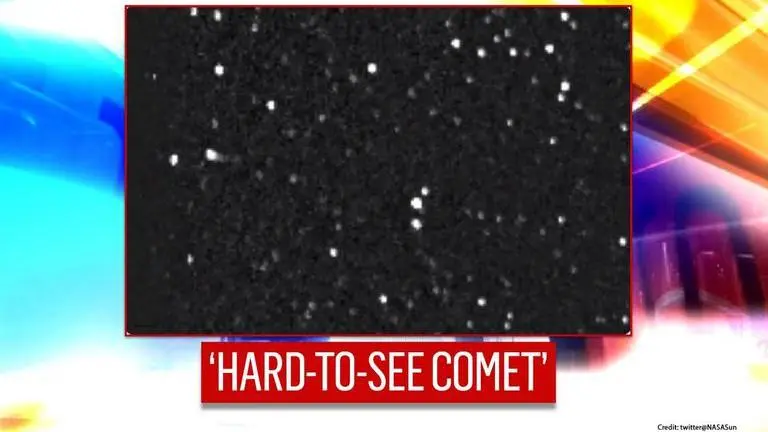Updated 5 November 2020 at 15:29 IST
NASA's Parker Solar Probe captures sungrazing comet for the first time
NASA's Parker Solar Probe, which is designed to image Sun's outer atmosphere and the solar wind, has recently captured a sungrazing comet.
- Science News
- 2 min read

NASA's Parker Solar Probe, which is designed to image Sun's outer atmosphere and the solar wind, has recently captured a sungrazing comet, confirming the ability of the spacecraft to observe "hard-to-see" comets. The image of the sungrazing comet was captured from the Parker Solar Probe's WISPR instrument. These kinds of comets are hard to observe from Earth or observatories other than NASA and ESA's Solar and Heliospheric Observatory (SOHO), which was launched in 1995 to study the Sun.
#ParkerSolarProbe’s camera is designed to image the solar wind & the Sun’s wispy outer atmosphere, the corona. But a recent batch of data also showed a sungrazing comet for the first time, confirming the mission can also study these hard-to-see comets. ☄️ https://t.co/sziQl3i2BS pic.twitter.com/C1ofn7tkSQ
— NASA Sun & Space (@NASASun) November 4, 2020
Why it is an important observation?
The comet has been nicknamed SOHO-4063 after the SOHO spacecraft, which was the first one to observe the fireball. According to NASA, the comet, which was first observed on September 13 by citizen scientist Worachate Boonplod, was destroyed due to intense heat as it moved closer to the Sun. The Parker Solar Probe sends the data back to Earth in batches, which means scientists didn't have the chance to look for the comet until weeks after it was first observed by the spacecraft.
Advertisement
The Parker Solar Probe is the closest observatory to the Sun, closer than SOHO, which was the first such spacecraft sent into space to observe the star of our solar system. The image of the sungrazing comet appeared brighter in Parker Solar Probe's data than in SOHO, hence, proving the sensitivity of the WISPR instrument and giving hope that it may reveal new details about sungrazers in the future.
Advertisement
Parker Solar Probe, which is named after the American solar astrophysicist Eugene Newman Parker, was launched in 2018. The Parker Solar Probe broke the record of Helios 2 spacecraft to become the closest-ever artificial object to the Sun.
Published By : Vishal Tiwari
Published On: 5 November 2020 at 15:30 IST
